Littoral LCS warships with universal TLU Mk 41: the configuration of threats from the US Navy is complicated
In early March 2017, regular test launches of AGM-7L-114A Hellfire short-range multipurpose tactical missiles were made from the American littoral battleship LCS-8 USS "Detroit" ("Freedom" class). The possibility of a vertical "hot" start of the "radar" version of the "Hellfire" was tested, and then its declination and flight towards the target selected by the weapons control complex. As launchers, promising vertical launch modules SSMM ("Surface-to-Surface Missile Module") were used, which have maximum lightness and compactness, which makes it possible to place this weapon complex on almost all types of missile boats, frigates and other surface ships. I would like to note the fact of submission of distorted information about the date of the first successful launch of the AGM-114L-8 from the magazine "Janes Missiles & Rocket", whose editors attributed it to March 2017, because in reality field tests of the above version of "Hellfire" were still in the summer of 2015, and they ended with quite successful destruction of high-speed surface targets of the "boat" type with dummies on board. Multipurpose tactical complex SSMM Increment 1 belongs to the third generation of modular weapons "Surface Wafare" (SUW) Mission Package for coastal combat ships of the LCS type.
During the development and fine-tuning of the SSMM vertical launcher, the special attention of General Dynamics and Lockheed Martin specialists was focused on the design and durability of the chambers for the outgoing jet streams, as well as on the venting ducts, which are located in dense to missile guides. There was a chance that channels burnt out causing significant damage to neighboring AGM-114 in guides and further decommissioning of all the ammunition, but the problems passed by the ship’s Hellfire-Longbow were a step closer to finding the initial combat readiness expected by the end of 2017. top of 2018 year. It is worth noting that the modular 1x12 PU SSMM with AGM-114 will be an excellent multi-purpose weapon of self-defense of the American littoral warships such as LCS; moreover, not one active destroyer or cruiser of the US Navy possesses such weapons.
Considering that the main sea / ocean sites of the American “coastal” operations are in the near sea zone, where LCS crews must prevent the sabotage and reconnaissance and assault forces of the enemy and other “mosquito fleets” naval vessels from entering the open sea (which pose a threat to warrants of friendly AUG / KUG), SSMM complexes can be used both to repel massive attacks from the above-mentioned surface assets, and to suppress the fortification activity nick on a plot of coastline, where the planned landing of USMC units. To ensure the all-weather capability of the complex, an upgraded version of the Hellfire missile with the AGM-114L-8A index was developed, equipped with a standard active radar homing head operating at a frequency of 94 GHz developed by the British company Marconi Electronic Systems. From the helicopter-based rocket ship version «8A» differs updated hardware and software bases for unification with the data bus ship fire control system.
Meanwhile, no matter how hard the “mattress” experts fought over the technical perfection of the advanced shipboard SSMM, bringing the rate of fire to 3 and less than seconds, the complex will not allow to operate confidently at a distance of more than 9-10 km, due to the long-range limitations of the Longbow-Hellfire rocket ". For this reason, LCS will not be able to independently confront the coastal artillery units of the enemy, equipped with long-range large-caliber artillery installations such as “Coast”, etc. Here and speed parameters littoral combat ships are unlikely to help. Moreover, the AGM-114L-8A approach speed is approximately 1150 — 1250 km / h, due to which its interception by modern ground-based air defense systems such as ZRSK Tor-M1 / 2 or Pantsir-C 1 is not a complicated procedure. It is also impossible to consider the Helfire panacea in terms of defense against certain specialized high-speed vehicles of the enemy, for example, from semi-submerged / diving reconnaissance torpedo boats of the type “Taedong-B” (“Kajami”) and “Type-D” that are in service Navy Iran and North Korea. When diving to a depth of 3-20 m, these boats become invulnerable to AGM-114L-8, and can reach the LCS attack distance with two available light 324-mm torpedoes. In this case, the Mk-50 / 54 torpedoes with a range from 2,4 to 15 km are the only means of defense for Freedom and Independents.
Unlike Aegis-destroyers / cruisers equipped with advanced AN / SQQ-89 hydro-acoustic complexes and RUM-139 "VL-Asroc" antisubmarine guided missiles, the existing littoral combat classes "Independence" and "Freedom" are practically helpless before a sudden massed torpedo or an anti-ship strike of ultra-low-noise enemy diesel-electric submarines / diesel engines. The missile umbrella of the US coastal zone warships of the LCS-1 / 2 types is represented by a single 1x21 combat module Mk 49 mod 3 of the short-range ASMD anti-aircraft missile system with the RIM-116A / B missile system. The maximum speed of the target to be hit by this complex is only 2550 km / h, while the Caliber anti-ship version - 3М54Е1 accelerates to 3100 km / h on approaching the target, and therefore ASMD has very little chances in opposition to the latter, especially considering the maneuverability of its supersonic combat stage.
With the existing architecture of installed weapons, ships of the LCS-1 / 2 types ("Littoral Combat Ship") are absolutely not ready for independent performance of their main combat missions in the near-sea zone in the conditions of saturation of the theater of operations with modern enemy anti-ship missiles, long-range coastal components artillery installations of the enemy.
The auxiliary multi-purpose tactical missile systems XM-501 NLOS-LS (also in the LCS arsenal), presented even more compact than SSMM, vertical CLU launchers with dimensions 114XXNNXX114, see only a small modular PU. launch containers for tactical missiles of the PAM type and the LAM type; in the 175 cell there is the electronic control equipment of the TLU CLU, including a data bus for communication with the command and control center.
The PAM missile (point strike ammunition) has a developed straight X-shaped folding wing and a subsonic flight speed, which makes it structurally similar to the MGM-157 anti-tank missile of the FOGM tactical complex. Meanwhile, the 40-kilometer flight range makes it possible to strike at the enemy's over-the-horizon sea and coastal targets, while remaining outside the detection radius of his radar equipment. This ability is achieved only if the enemy does not have aviation manned and / or unmanned reconnaissance and target designation systems. On the cruise phase of the flight, the 53-kilogram PAM is controlled according to the data of the GPS module and the inertial navigation system, and on approach, an infrared or semi-active laser homing head is activated. This increases the noise immunity in the event the enemy uses optical-electronic countermeasures. Meanwhile, due to the lack of an active radar guidance channel, the all-weather missile is not achieved.
The LAM rocket (anti-burglary ammunition) has a PAM-like design, but instead of a solid-propellant rocket engine, a compact outboard turbojet engine and a large fuel tank are installed. The rocket is equipped with two large wings, due to which the aerodynamic configuration corresponds to larger tactical and strategic cruise missiles. The LAM range reaches 200 km with a direct path to the selected object. At the same time, it has numerous flight modes with loitering on the site of the accumulation of equipment or fortified enemy.
The rocket can circle for more than half an hour in the area of the battlefield at a distance of 60 km from the location of the NLOS-LS battery. The LAM rocket has a specialized television homing head based on a high-resolution CCD or CMOS sensor. The TV channel allows you to conduct a visual reconnaissance with a telemetric radio channel of data transmission to the LAM missile command post. Also, the laser rangefinder-target designator channel is integrated into its GOS, thanks to which the locking missile can illuminate the target for the semi-active laser spot recognition sensor of a high-precision PAM rocket. This quality ensures the complete self-sufficiency of the XM-501 NLOS-LS complex from additional unmanned or manned reconnaissance and targeting aircraft (their tasks are carried out in full by the LAM rocket). Long lasting locking of the latter makes it possible to provide sequential target designation to several PAM missiles at once, as well as to several AGM-65E / E2, AGM-114K / P missiles of the air-to-ground type or to the semi-active laser homing head bombs. By transferring the necessary tactical information to the command and control point and issuing target designation for the friendly elements of the air defense system, LAM, exactly like its short-range PAM variant, hits the target chosen by the operator.
Despite all the advantages of the XM-501 NLOS-LS complex, including the multifunctionality of the PAM and LAM missiles, their large over-the-horizon flight range and compactness, which allows a CLU with 15 missiles to be placed on a small ship up to 150, their impact capabilities are extremely limited by subsonic flight speed and small the weight of the modular combat "equipment", represented by concrete-concrete, cumulative and high-explosive fragmentation warheads weighing up to 5 kg for modifying PAM and 3,63 kg for modifying LAM. And this makes them vulnerable to modern anti-aircraft missile systems and ineffective against the heavy-sized reinforced concrete fortifications of the enemy. There can be no question of the destruction by NLOS-LS of well-protected bunkers and command posts (even during massive use).
In view of these tactical and technical deficiencies of the LCS class littoral warships, the command of the US Navy formed a working group to review methods for increasing anti-aircraft and anti-missile capabilities of the following production ships of the LCS-1 and LCS-2 classes. One of the techniques is the installation of the 1x16 vertical launcher Mk 48 VLS complex ESSM ("Evolved Sea Sparrow Missile"). The details of this upgrade are not reported yet, but it is obvious that we are talking about the underdeck version of the PU Mk 48 mod 2, which will significantly reduce the number of radio-contrast elements on the LCS deck, reducing its total ESR. Similar built-in vertical launchers were installed on the South Korean class destroyers “Kvangetho Tevan” (project KDX-I). But anti-aircraft guided missiles of the RIM-162C ESSM version can only provide medium-range anti-aircraft and anti-missile defenses (from 30 to 50 km) from medium-altitude and high-altitude aerial attacks. At the same time, outside the radio horizon, the RIM-162C will be useless against low-altitude anti-ship missiles, since it is equipped with semi-active radar homing systems, which require not only simple targeting, but also illumination with multifunctional radars.
For this reason, the main option to enhance the combat capabilities of the American "coastal" is to upgrade using standard universal vertical launchers of the Mk 41 VLS family. US sources report that ships can only get the 1 module Mk 41, which includes the 8 transport-launch containers Mk 13 / 14 / 15 / 21 with a length of 6700 and a width of 635 mm, but in reality the bow of the deck is quite capable of accommodating much more modules. Thus, LCS-1 (17,5 body width, m) has volumes to accommodate the standard 8x8 UVPU Mk 41 on the 61 operating cell (TPC) of three modifications. As for the three-body trimaran class LCS-2 "Independence", the nose of its front deck has a width of the order of 7 - 10 m, which will give the opportunity to place only the 4 module in the 1 series (29 operating TPC). It is worth noting that at 3 units a smaller number of existing transport and launch containers in PU Mk 41 is observed due to the presence in these containers of a loading device instead of rocket equipment.
Representatives of the US Navy focus on the use of advanced littoral warships LCS anti-aircraft guided missiles "Standart Missile-2." The most advanced version of missiles in the rich nomenclature of SM-2 is the long-range interceptor RIM-156B (SM-2ER Block IV A). It will bring the now insignificant (in terms of air defense) capabilities of American warships of the coastal zone to a new level that allows it to operate effectively in the system of naval air defense-missile defense of the United States fleetwhich corresponds to the network-centric concept of "NIFC-CA". The range of the RIM-156B is 240 km, and the height of the target is about 32 km. Also, the noise immunity of a semi-active radar seeker under conditions of active radio countermeasures and maneuverability of SAMs are noticeably improved. But SM-2 is just the top of the iceberg; After all, the Americans, as usual, are not inclined to draw close attention to their modernization programs, vital for the Navy and the Air Force, in advance.
Transport-launch containers of the Mk 21 type (this particular TPK index is intended for “long-range” extended versions of the “Standards”) is also adapted for using the SM-3 (RIM-161A / B) exostratosphere interceptor missiles of the SM-174 family (RIM-1,5A / B) and ultra-long-range anti-aircraft missiles RIM-4 ERAM . These anti-missiles will introduce littoral battleships LCS in a full-fledged anti-missile unit of the US Navy in marine or ocean theaters of military operations. In addition to all this, littoral warships will be able to go to the frontiers of anti-missile missions on 1 times faster than missile cruisers of URO class “Ticonderoga” and destroyers “Arley Burk”. A very good start to building up the combat capabilities of an ordinary littoral ship. However, for the self-sufficiency of LCS in the tasks of detecting, tracking and defeating aerodynamic and ballistic targets, it may be necessary to install a “lightweight” version of the combat information and control system “Aegis”, as well as a specialized simplified modification of the 1-sided AN / SPY-2,37F X-ray multipurpose radar (V) This station is an analogue of the version AN / SPY-1836D (V), but it has 4352 times less number of MRP elements in comparison with the main version (175 versus XNUMX). Consequently, the energy capabilities allow the detection of typical targets at a distance of only XNUMX km.
Meanwhile, SPY-1F (V) retains all the best qualities of the modifications “B” and “D (V)” in terms of detecting and tracking low-flying anti-ship missiles with low ESR in terms of the enemy EW, as well as in terms of high-speed diving EAS type "Anti-radar missile". The station uses additional adaptive beam forming algorithms for high-speed small-sized objects approaching under the cover of enemy radio-electronic interference. Antenna arrays AN / SPY-1F (V) can be placed on the faces of an additional pyramidal superstructure at a height of about 25 - 27 m above sea level, which will increase the radio horizon for the complex "SM-2 / 3 / 6". TPK Mk 13 / 21 launcher Mk 4, in the presence of a large number of modern subsonic and supersonic high-precision weapons, can quickly be converted to use the RIM-162 ESSM missile system, and in the future, RIM-116 Block II. In the case of the “Sea Sparrow”, the ammunition of each TPK, and therefore the entire Mk 41, can be increased by 4 times. In the case of RIM-116 - 9 times. If the Aegis and AN / SPY-1F (V) are not installed on the LCS, the Mk 41 missiles will be launched on target designation from Arley Burkoff, Tikonderog and airborne radar, and the coastal will be used only in as a high-speed carrier (the operating surveillance radar TRS-3D, installed on LCS-class ships, has extremely limited capabilities).
Equipping the coastal zone LCS with the aforementioned radar and the Aegis BIUS, in addition to the Mk 41, will significantly enhance the capabilities of the United States naval missile defense system to intercept medium-range ballistic missiles and ICBMs in the initial part of the flight, since they can act in shallow water and approach ground positions launching enemy missiles is much closer than Tikonderoga or Arley Burke’s; speed capabilities will make it possible to do this one and a half times faster. But this advantage can become a threat only for small states where it is not possible to place the launch positions of the BR in 1 and more than thousand kilometers from the coastline.
Meanwhile, the modernized LCSs can be used not only in the naval anti-missile defense system, but also in the strategic attack "backbone" of the American fleet. Mk 41 launchers installed on ships can be partially or completely modified for the shock version. The basis of this is the equipment of transport and launch containers Mk 14 mod 0 / 1. These cells are designed to launch strategic surface-launched cruise missiles RGM-109E Block IV (2000 range - 2400 km) and low-profile AGM-158C (800 km) anti-ship anti-ship missiles. Thus, a series of littoral ships will be able to perform the shock functions previously inherent in cruisers and destroyers of rocket weapon control, which is another significant stage in increasing the offensive capabilities of the US Navy. For us, this is a very tangible threat and the next “goal” at the gates of a smaller fleet; All the more so since our naval forces today do not have any surface platform capable of delivering strategic EAS and missile defense elements to the required area of the theater of operations with the speed of 40-45 units.
Anti-submarine capabilities of littoral warships will also increase. To do this, transport-launch canisters with the index Mk 41 can be installed in the Mk 15 cells. They are designed to accommodate anti-submarine guided missiles RUM-139 "VL-Asroc" with a firing range of more than 40 km, which will allow attacking enemy submarines in the first distant zone of acoustic illumination (as is known, the Mark 50 / 54 torpedoes, present today in the LCS ammunition, allow act only in the near zone of acoustic illumination).
Meanwhile, the hydroacoustic capabilities of LCS class warships leave much to be desired. We consider this position in detail. At the moment, the underwater drone-submarine of the mine defense AN / VLD-1 (V) 1 continues to remain the only hydroacoustic device for littoral combat ships. This unmanned underwater sonar drone is represented by a semi-submerged 7,3-ton vehicle RMV (Remote Minehunting Vehicle, remote mine-hunting device), which is also the carrier of the more compact AN / AQS-20A VDS module (Variable Depth Sensor, variable-depth sensor). RMV is a fairly large unit with a length of 7 m and a diameter of 1,2 m, moving at a very shallow depth, allowing the snorkel and a special mast with antennas transmitting acoustic information to the PBU of the littoral combat ship LCS to remain in the surface position. RMV is equipped with a powerful directional active-passive HOOK for mine detection, as well as a television camera for visual identification of detected objects. This unit is powered by an 370-strong diesel engine that provides maximum speed in 16 knots and a working 10-12 knots; the capacity of the fuel system allows you to scan the allotted underwater section during 40 hours at an economical rate.
Smaller hydroacoustic reconnaissance, underwater orientation and situational awareness AN / AQS-20A VDS is set on a special suspension point under the RMV housing in the traveling mode. During the start of the assignment, the VDS comes off the suspension and is towed by the “mine hunter” RMV using a long cable. In addition to the SAC front view, AQS-20A also has additional viewing stations of the side hemispheres and the lower hemisphere, which makes it possible to accurately determine the depth in shallow water, as well as identify objects at the bottom and in the water column. The VDS module is an invaluable companion of the “mine hunter”, allowing it to better navigate complex hydrological conditions, as well as in difficult bottom relief conditions. The power of the hydroacoustic stations of the towed VDS module is much less than that of the single bow station of the leading RMV; nevertheless, they are more expansive and allow you to “look” in areas that are technically unrealizable for RMV. But as you already understood, the AN / VLD-1 (V) 1 complex is a highly specialized tool, “sharpened” for the performance of anti-mine tasks. It is not intended for direction finding, tracking and target designation of enemy submarines operating at a distance of a torpedo attack, and therefore in the US Navy research laboratories they are working on equipping LCS with additional hydroacoustic tools that may be useful in the future for information support of ASMR PLUR RUM-139, placed on modernized ships.
As it became known at the end of 2016 from captain Casey Moton, head of the LCS Mission Module program, the standard hydroacoustic image of the littoral warships of the US Navy could be upgraded in the coming years. We are talking about equipping this class of ships with low frequency GAKs with a flexible extended towed antenna (GPBA) of the AN / SQR-20 MFTA (Multi-Function Towed Array) type. The “sleeve” of an equidistant towed acoustic grill AN / SQR-20 has an 3 diameter of an inch, and includes a huge number of piezoelectric pressure receivers that receive both the sounds generated by underwater objects and the sound reflected from them generated by its own low-frequency emitter. These hydroacoustic complexes operate in the frequency range 0,05 - 0,5 kHz and can be integrated into the most advanced US shipboard power systems AN / SQQ-89 (V) 15.
A similar domestic complex is Vignette-EM, it is able to detect submarines in the first and second distant zones of acoustic illumination and target designation for torpedoes with active-passive sonar homing equipment. Consequently, similar capabilities can be obtained by American “coastal” class LCS after equipping with AN / SQR-20 MFTA sonars. Moreover, GPBA allows the detection of enemy torpedoes and target designation for anti-torpedo complexes with an accuracy of 1º. But the implementation of intensive maneuvers, quite peculiar to the class of LCS, will make the use of an extended antenna a very difficult process (especially in shallow water); A decent time is also required for the deployment of GPBA, and therefore there is nothing better than the latest version of the AN / SQS-53D corps sonar station located in the bow salute of the ship LCS (as was done on Ticonderogs and Arley Burke). This GUS operates at frequencies from 3 to 192 kHz and is capable of detecting mines in the second near-zone acoustic illumination (of the order of 20 km), due to which the AN / WLD-1 (V) 1 drone can be used. The acoustic array of the AN / SQS-53D station is represented by 576 receiving and transmitting modules, scanning the space in the sector 120 degrees. The peak power of this sonar is 190 kW.
At the same time, the hull of the LCS class ships are not constructively adapted for the installation of powerful bulbs GAK, and therefore nothing should be expected except for the towed AN / SQR-20 MFTA GAS. According to Captain Casey Moton, this complex can begin to be tested in the LCS weapon system already in 2017. But in view of the above tactical and technical incompatibility between the areas of use of LCS and this gas, even modernized littoral ships may need external targeting from remote cruisers, URO destroyers and anti-submarine aircraft, without which there will be little sense from Asroca.
After placing the Mk 41 launcher, with the possibility of using all types of transport and launch containers to give the advanced LCS ships proper multitasking, the “coastal guards” will require a radical upgrade of the onboard radio-electronic equipment. Such a program will require additional 200 - 300 million dollars (for each new ship) from the US defense budget, after which each unit will cost approximately 750 - 800 million dollars. As far as such a program will pay for itself, it is not entirely clear, but judging by the seemingly modernizing potential of the LCS, it will make a big leap towards the multifunctionality of the latest versions of the Arleigh Burke destroyers estimated at 1,5 - 1,7 billion dollars. Even if only UVKU Mk 41 will be used as an update of the littoral combat ships, they will be able to fire on numerous types of targets by targeting other classes of combat ships and aviation aerial reconnaissance complexes through the Link-16 tactical network or its “non-armed” implementation. JTIDS. The appearance on 50% of a faster and more flexible Tomahawks and SM-3 / 6 surface delivery system will create another threat of strategic importance for our Navy, VKS and Strategic Rocket Forces objects that will need to be defended by existing and new means of air attack.
Information sources:
http://rbase.new-factoria.ru/missile/wobb/bgm109c_d/mk41.htm
http://www.scout.com/military/warrior/story/1761274-navy-lcs-vertically-fires-hellfire-missile
https://www.defensetech.org/2010/04/23/army-cancels-nlos-ls-missile-system/
http://rbase.new-factoria.ru/missile/wobb/standard_2/standard_2.shtml
http://rbase.new-factoria.ru/missile/wobb/sm3/sm3.shtml
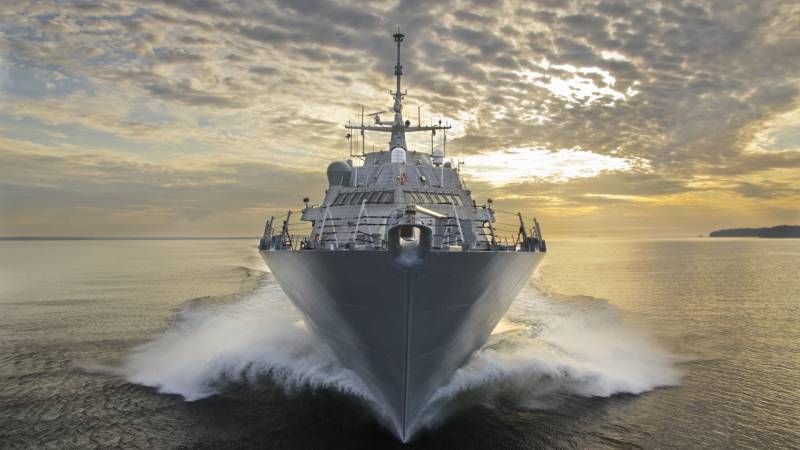
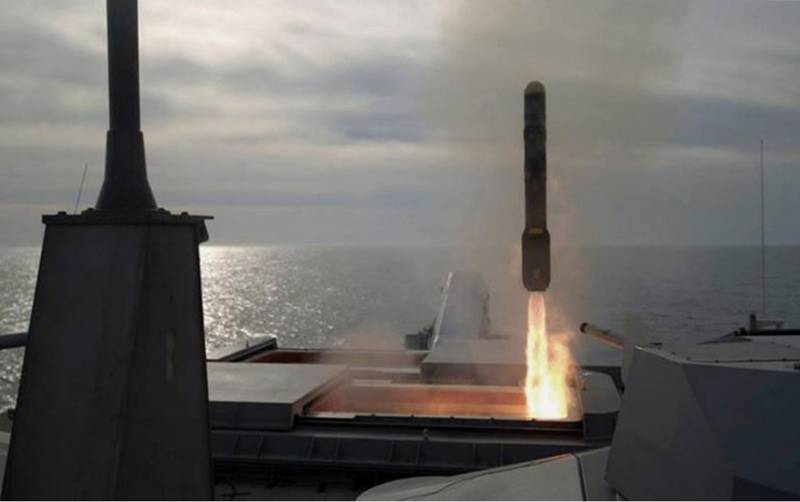
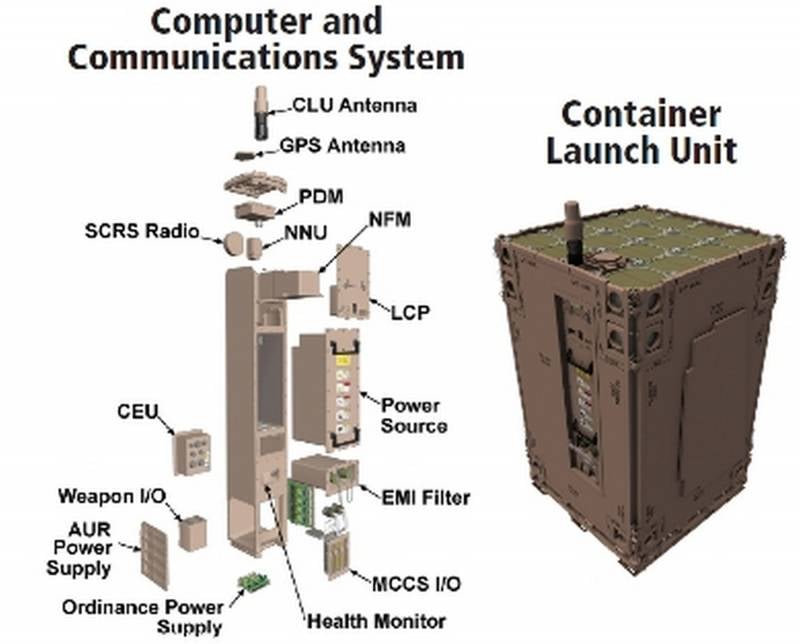
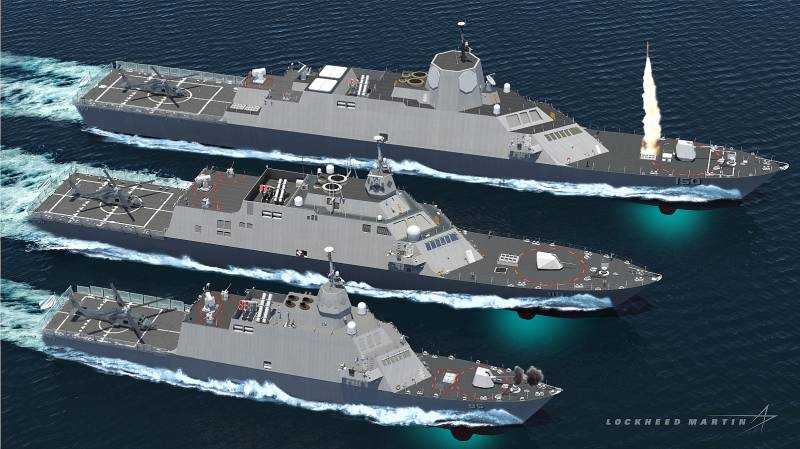
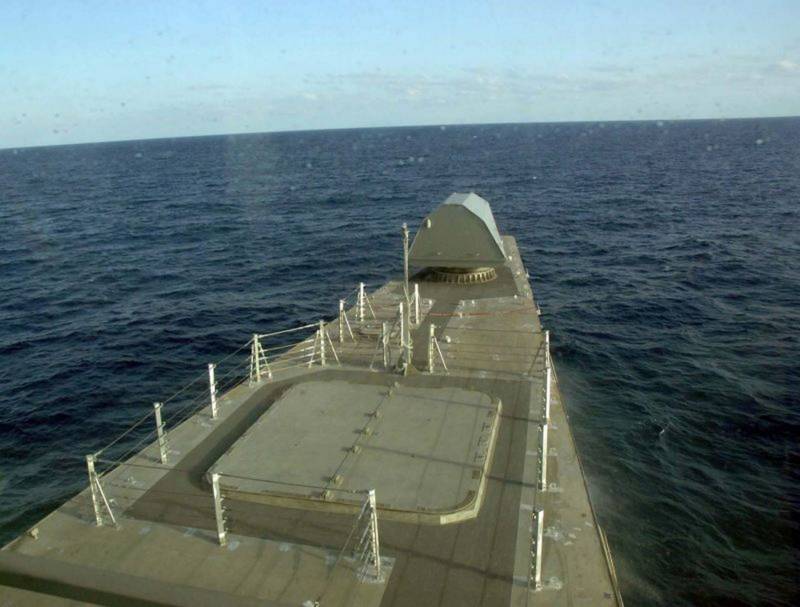
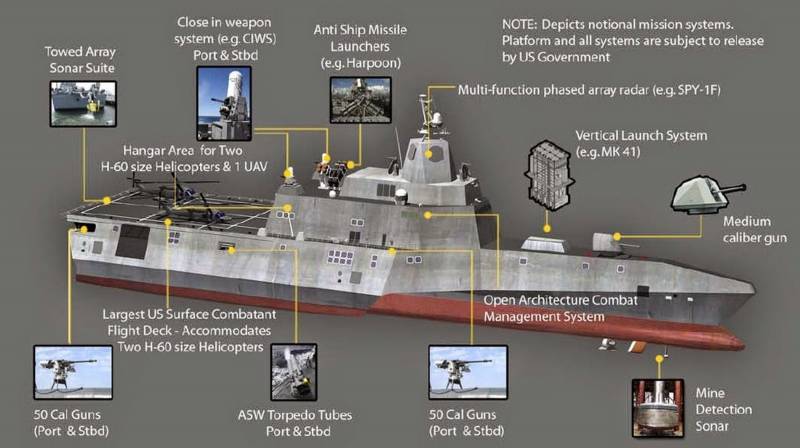
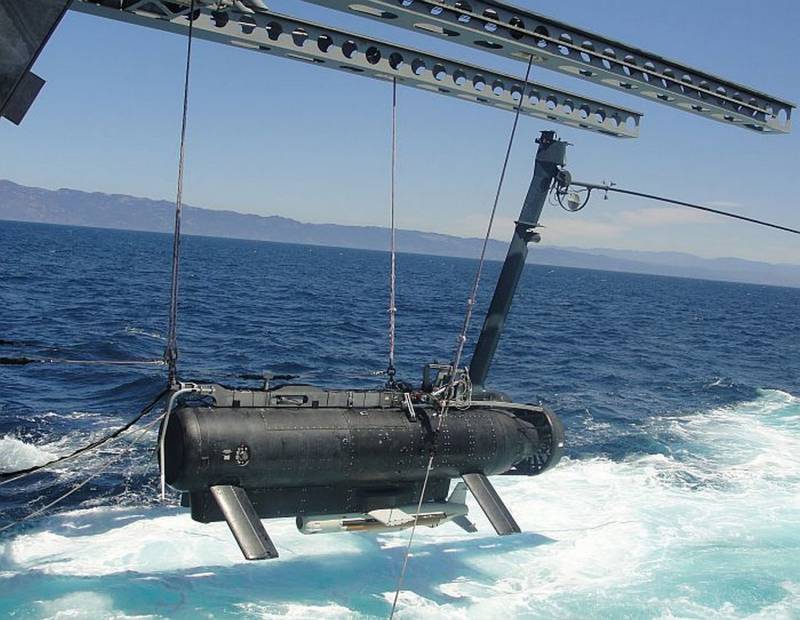
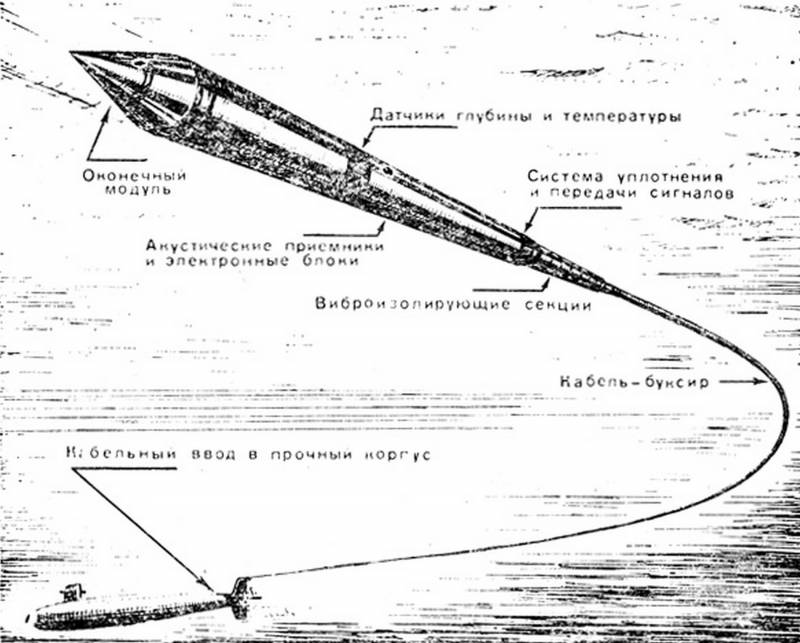
Information